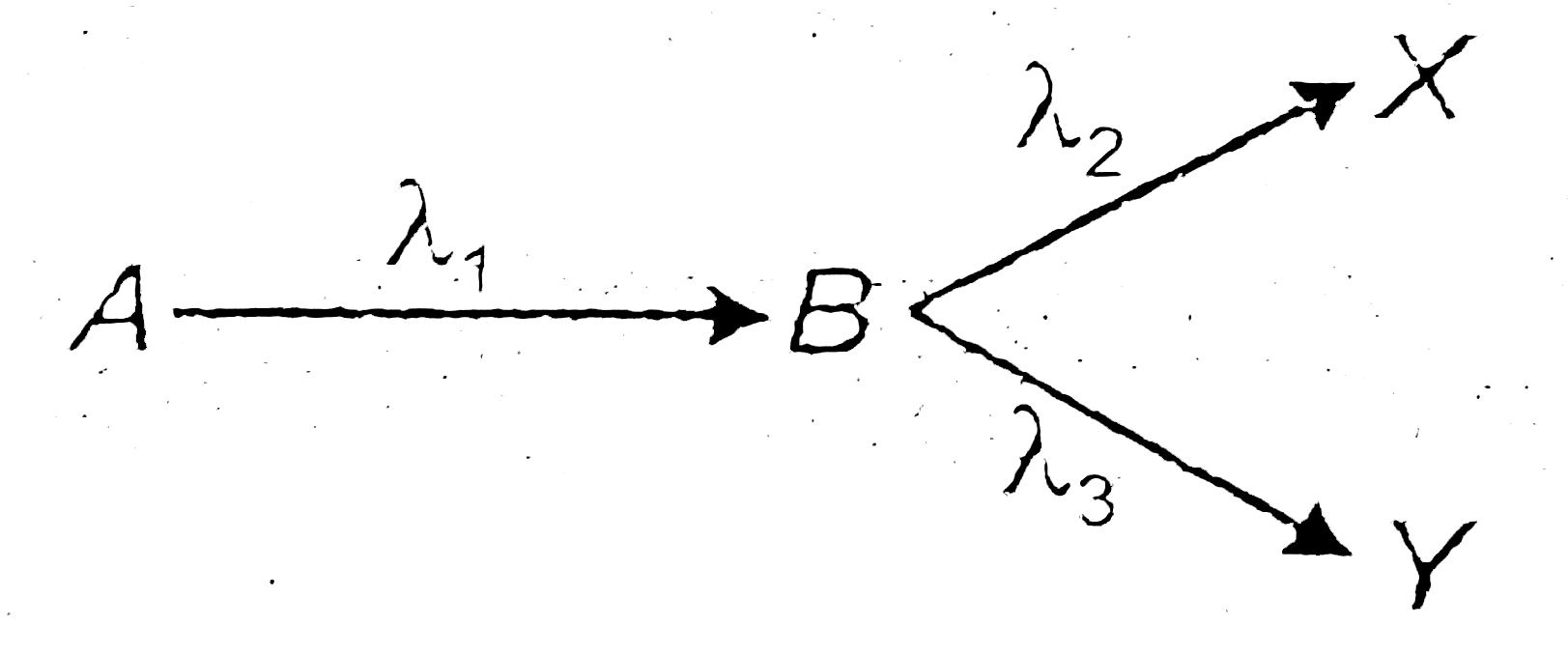Choose the most appropriate option.
If N0 be the number of nuclei present at time t = 0. Then, the number of undecayed nuclei, N present after n mean life
N=(12)nN0
N=(12)1/nN0
N=(14)nN0
N=(14)1/nN0
The correct Answer is:a
Similar Questions
The rate of biomass production by consumers is called :
View SolutionThe rate at which a particular decay process occurs in a radio sample, is proportional to the number of radio active nuclei present . If N is the number of radio active nuclei present at some instant, the rate of change of N is dNdt=−λN. Consider radioactive decay of A to B which may further decay either to X or to Y, λ1,λ2andλ3 are decay constants for A to B decay , B to X decay and B of Y decay respectively. if at t=0 number of nuclei of A,B , X and Y are N0,N0,zero and zero respectively

and N1,N2,N3,N4 are number of nuclei A,B , X and Y at any instant.
The number of nuclei of B will first increase then after a maximum value, it will decreases, if
View Solution
Knowledge Check
Choose the most appropriate answer.
The number of nuclei present in a zygote is
(i) none
(ii) one
(iii) two
(iv) fourANoneBoneCtwoDfourIf N0 is the number of radioactive nuclei initially present , then the number of nuclei remaining undecayed at the end of nth half life is
A2−nN0B2−nN0C2−nN0D2−nN0A radioactive nuclide is produced at a constant rate α−per second/ It's decay constant is λsec−1. If N0 b the number of nuclei at time t=0, then maximum number of nuclei at any instant possible are:
AαλBN0−αλCλαDα+λN0
Nuclei of radioactive element A are produced at rate t2 (where t is time) at any time t. The element A has decay constant λ. Let N be the number of nuclei of element A at any time t. At time t=t0,dN/dt is minimum. The number of nuclei of element A at time t=t0 is
View SolutionTwo radioactive substances A and B have half lives of T and 2T respectively. Samples of a and b contain equal number of nuclei initially. After a time 4T, the ratio of the number of undecayed nuclei of A to the number if undecayed nuclei of A to the number of undeacyed nuclei of B is
View SolutionNuclei of radioactive element A are produced at rate 't2' (where t is time) at any time t. The element A has decay constant λ. Let N be the number of nuclei of element A at any time t. At time t=t0,dN/dt is minimum. The number of nuclei of element A at time t=t0 is
View SolutionA large population of radioactive nucleus starts disintegrating at t=0.At time t, if N= number of parent nuclei present, D= the number of daughter nuclei present and R= rate at which the daughter nuclei are produced , then the correct representation will be:
View SolutionTwo radioactive nuclei P and Q, in a given sample decay into a stable nucleus R. At time t=0, number of P species are 4N0 and that of Q are N0. Half-life of P (for conversation to R) is 1mm whereas that of Q is 2min. Initially there are no nuclei of R present in the sample. When number of nuclei of P and Q are equal, the number of nuclei of R present in the sample would be :
View Solution
